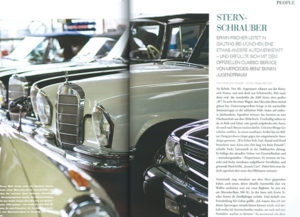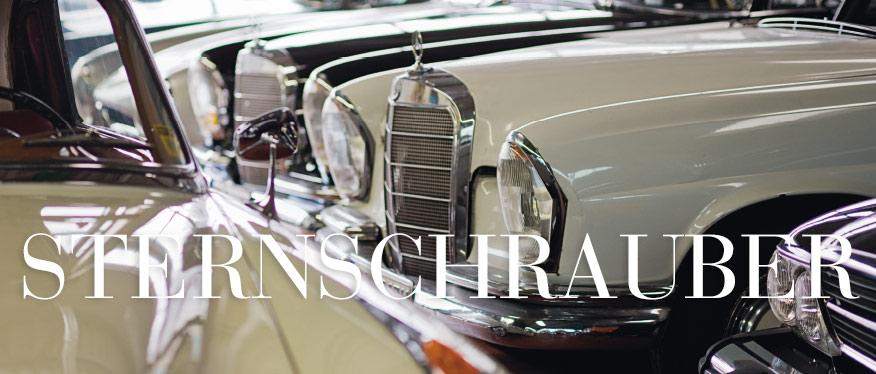Erwin Fischer runs a somewhat different kind of garage in Gauting near Munich – and fulfilled his childhood dream with the official Mercedes-Benz Classic Service
You smile. Almost all of them. Pairs of eyes look out of the bodywork, and yet they are only headlights. Sometimes round, then oval, the number behind the capital “W” decides. It stands for a car that Mercedes-Benz once built. Taken together, the group of senior automobiles in the simple hall easily adds up to several centuries. Somehow the scenario is reminiscent of a bunny school from a picture book. They stand there innocently, in rows and rows, or just jacked up, old cars that can still smell of gasoline. And tell a lot of stories. In a controversial article, a design professor from Cologne recently railed against contemporary car design. “Just like cows, donkeys, camels and dogs in the past, people regarded cars like best friends for a while,” writes Paolo Tumminelli in the Süddeutsche Zeitung. He laments the current loss of immediacy and – humanly appropriate – proportions. He misses a face and instead finds puffy foreheads and grinning mouth grills, “Jurassic Cars”. But you would have expected them to be among the classic cars.

Tumminelli may have spoken from the heart of some people, including those for whom current cars seem more like weapons than faithful companions. As faithful as a Mercedes-Benz 300 SL. Erwin Fischer had already fallen in love with him as a twelve-year-old. And therefore made a decision for life. “I knew that I would never be able to afford this sports car, so I wanted to become a car mechanic so that I could take a test drive.” The master craftsman at the Mercedes-Benz Classic workshop in Gauting is not usually as sentimental as this declaration of love. At the age of fourteen, he began his apprenticeship as a car mechanic at Mercedes-Benz in Munich and later completed his master’s degree in 1978. Today, at the age of sixty, he is a sought-after man among classic car enthusiasts.
You have to imagine it. As a young lad, he rightly regarded the now priceless classic from Stuttgart as a modern car. Today, however, its technical development dates back almost sixty years. “I can still remember exactly how the first Mercedes-Benz 230 SL stood in the workshop in Arnulfstrasse in 1963,” says Erwin Fischer, “that was quite something!” Not even 20,000 units of the early type of the W 113 series were built by 1967. The last 280 SL rolled off the production line in 1971, and with fewer than 50,000 cars, the chapter of the W 113 model series, now known as the “Pagoda”, was closed for the Stuttgart-based company. In contrast, well over half a million of the smaller current Mercedes-Benz SLK sports car have already been sold to date. And you can guess which one has a friendlier smile. In contrast, the laptop connection is of course not available on the old models. “Mercedes-Benz only introduced an electronic injection system at the end of the 1960s,” says the Munich expert. “That was a major turning point in car technology, before that everything in the engine was purely mechanical.” …
Summary from “Living 04/2009
Discover >>HERE also our classic car experiences at the Linslerhof!


